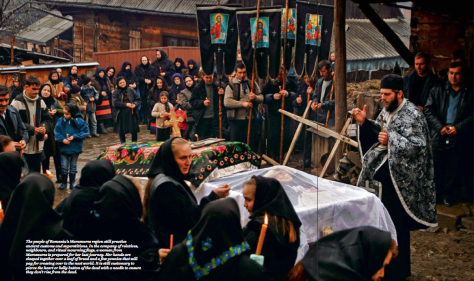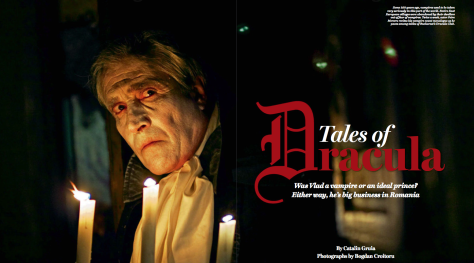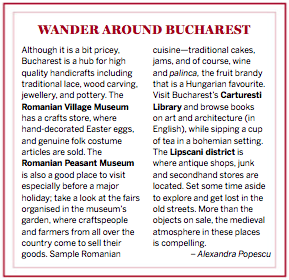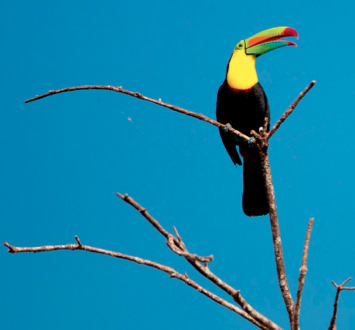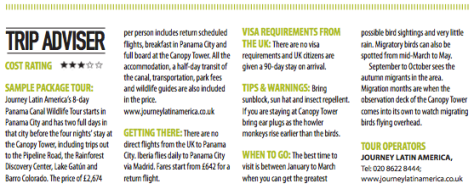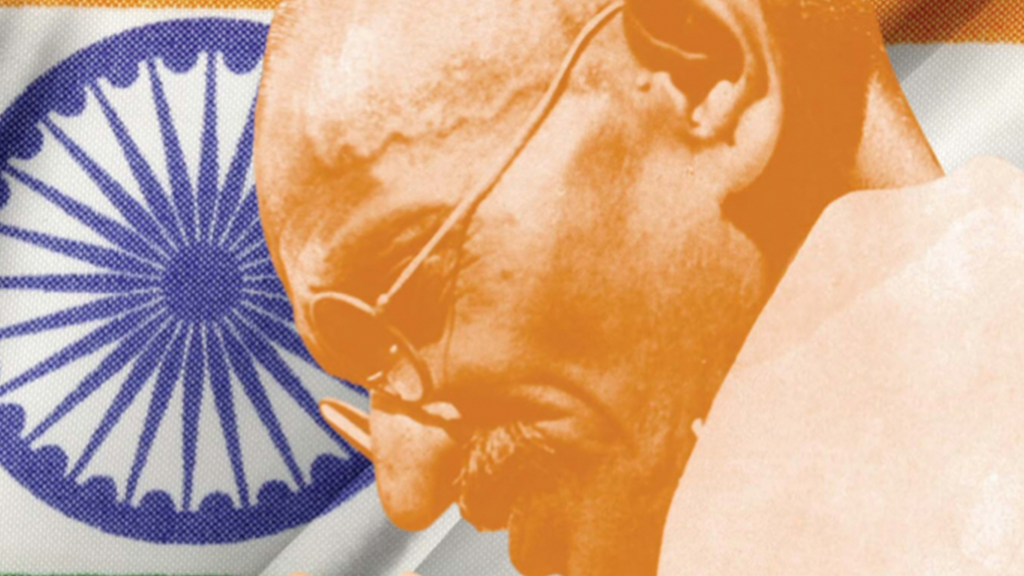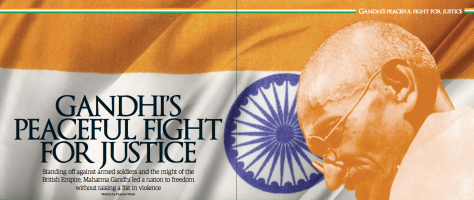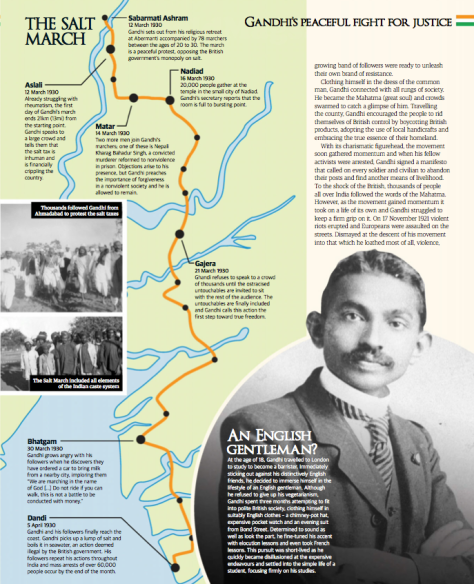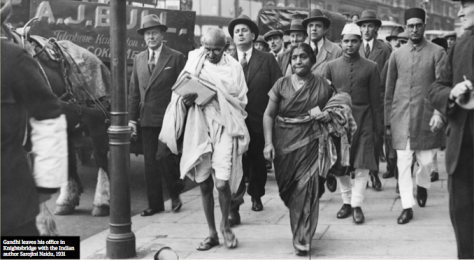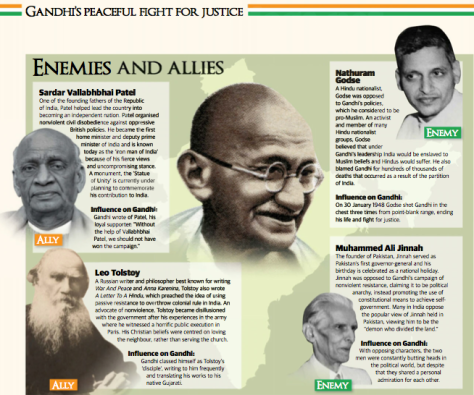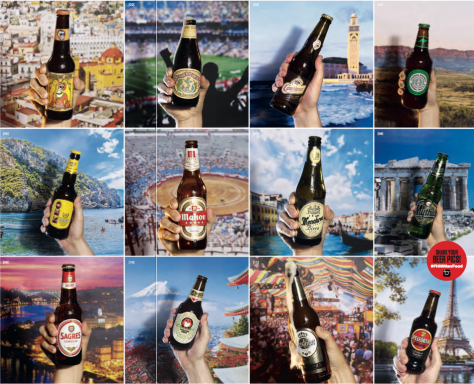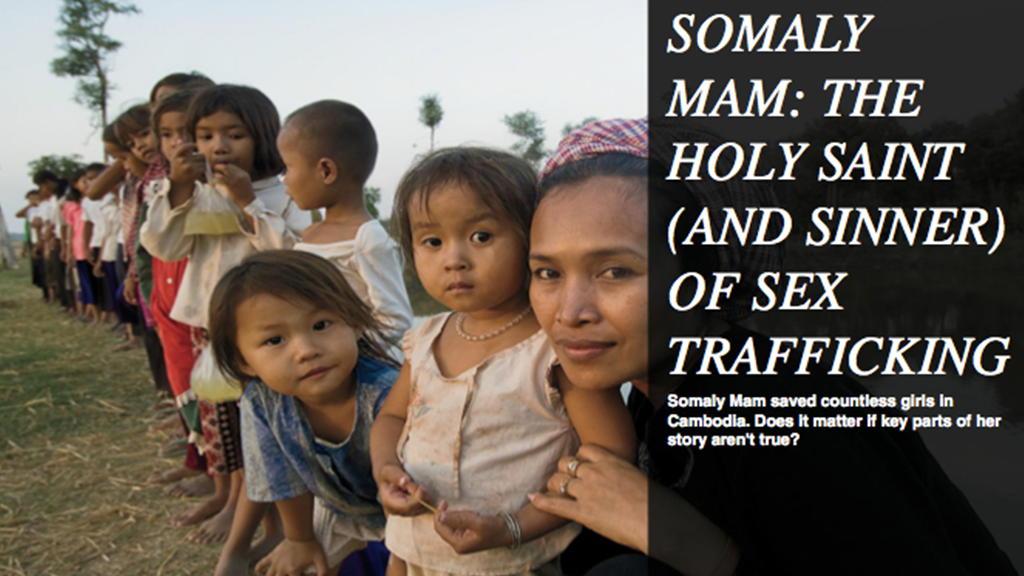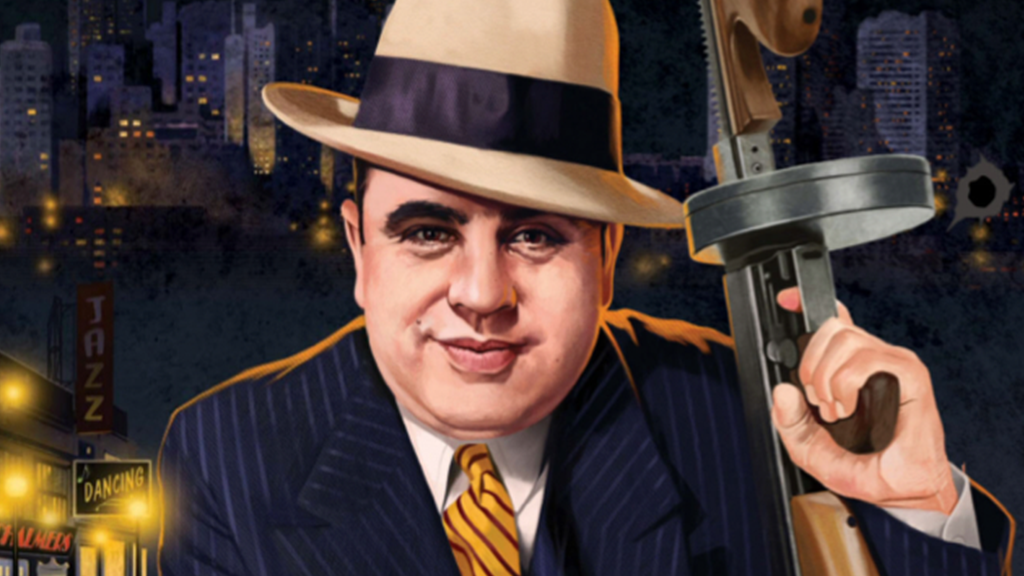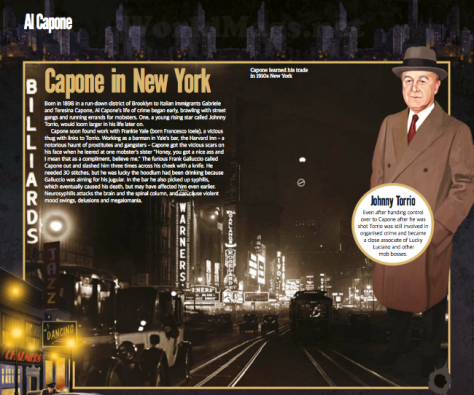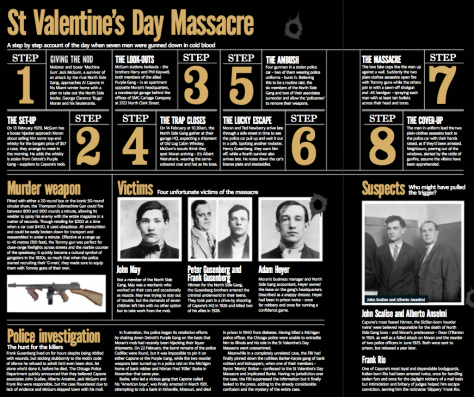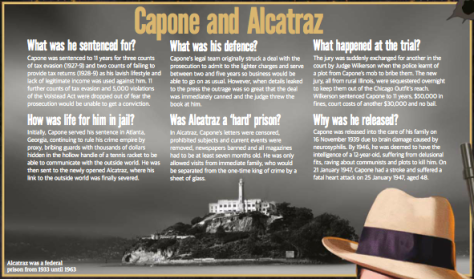Tag Archives: journalism
New Frontiers with Blake Lively
Blake Lively brings her unerring eye, Southern roots, and love of storytelling to her latest venture – a website called Preserve. Meet up with the Gossip Girl turned internet entrepreneur.

“People want to get back to the magic of smaller, special, and handmade,” she says. “They want things with meaning. I know that because I want that”
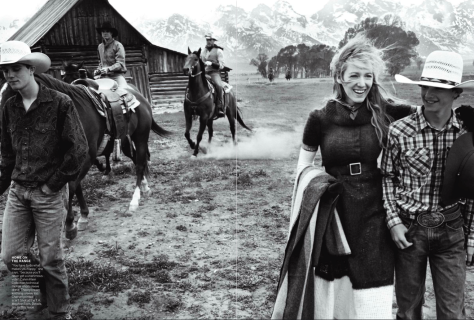 “My mother had very humble beginnings,” Lively says. “She worked in the fields from sunup to sundown, from the time she could walk. She’s strong as an ox”
“My mother had very humble beginnings,” Lively says. “She worked in the fields from sunup to sundown, from the time she could walk. She’s strong as an ox”
Tales of Dracula
Was Vlad a vampire or an ideal prince? Either way, he’s big business in Romania.
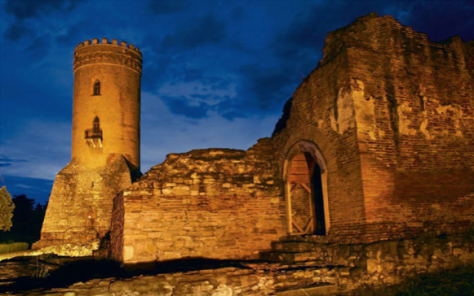 The expensive glasses and cutlery sparkling on our elegant table were in sharp contrast with the medieval walls of the chapel in which we were eating dinner. All of a sudden, delicate ambient music explod- ed in a crescendo of thunder and owl hooting. The dim red light was drowned by surreal smoke. It was then that Dracula appeared. “Wel- come to my house!” he cried. Loudspeakers broke into a wild howl right next to my ear, while the vampire vanished into a vertical coffin.
The expensive glasses and cutlery sparkling on our elegant table were in sharp contrast with the medieval walls of the chapel in which we were eating dinner. All of a sudden, delicate ambient music explod- ed in a crescendo of thunder and owl hooting. The dim red light was drowned by surreal smoke. It was then that Dracula appeared. “Wel- come to my house!” he cried. Loudspeakers broke into a wild howl right next to my ear, while the vampire vanished into a vertical coffin.
Every Tuesday and Friday, actor Petre Moraru recites his vam- pire monologue walking among the tables at Count Dracula Club in Bucharest. Every now and then, a pretty girl is dragged away and bitten on the neck. Foreign guests adore the show, the atmos- phere, and the food. Romanians generally come here only if they accompany foreigners (like I did). Most of them are not amused.
Paradoxically, although Dracula is a global hit, the count remained practically unknown in his own country until recently. Romanian villagers in remote areas have still not heard of him. Vampire literature was prohibited here as an example of Western decadence and Dracula was translated into Romanian only after the fall of communism in 1989. Unfortunately, since then, many Romanians have started to take Dracula far too seriously. While people around the world associate the name with the vampire, for Romanians, Dracula was their perfect medieval ruler, a man they call Vlad epe —or Vlad the Impaler.
 The fact that Stoker located his vampire in Transylvania has irked many Romanians. Some believe that it is a conspiracy by neighbour- ing Hungary to defame them, especially since Bela Lugosi, the actor who played the vampire in the first Hollywood version of the story, was from that country. Duncan Light, the British professor researching the Dracula industry, told me that Stoker’s work-notes discovered in the mid-’70s show that the Irish writer initially had no idea about Vlad the Impaler or Transylvania, and was actually thinking about a cer- tain Count Vampyr from Eastern Austria. Evidently, Stoker changed his mind after reading an article written in 1885 entitled Transylva- nian Superstition, about a land where most species of demons, fairies, witches, and goblins found safe haven after the progress of science had banished them from other parts of Europe.
The fact that Stoker located his vampire in Transylvania has irked many Romanians. Some believe that it is a conspiracy by neighbour- ing Hungary to defame them, especially since Bela Lugosi, the actor who played the vampire in the first Hollywood version of the story, was from that country. Duncan Light, the British professor researching the Dracula industry, told me that Stoker’s work-notes discovered in the mid-’70s show that the Irish writer initially had no idea about Vlad the Impaler or Transylvania, and was actually thinking about a cer- tain Count Vampyr from Eastern Austria. Evidently, Stoker changed his mind after reading an article written in 1885 entitled Transylva- nian Superstition, about a land where most species of demons, fairies, witches, and goblins found safe haven after the progress of science had banished them from other parts of Europe.
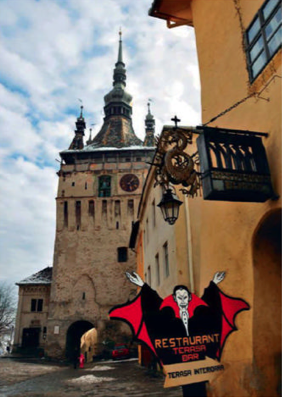 I thought about the Romanian responses to the count as we strolled through Târgoviste, Vlad’s first capital city, where he is said to have committed many atrocities. Both Turkish chronicles and Slav manu- scripts describe him as a psychopathic tyrant who went as far as cut- ting off mothers’ breasts and filling the cavities with the heads of their babies, before impaling the women. We strolled around a small park full of ruins surrounding the citadel, with wide chambers and crum- bling ceilings. The only structure in Târgoviste built by Vlad that has remained intact is the Twilight Tower, which provides a complete panorama of the whole complex. One thing is clear: this is epe ’ kingdom—and there’s no trace of Dracula the Vampire here. This is a vision of history that many Romanians prefer. “In order to counter- balance the Western Dracula mythology, Romania should initiate a propaganda campaign and show the world the deeds and life of the real Vlad epe ,” historian Radu Vergatti told me.
I thought about the Romanian responses to the count as we strolled through Târgoviste, Vlad’s first capital city, where he is said to have committed many atrocities. Both Turkish chronicles and Slav manu- scripts describe him as a psychopathic tyrant who went as far as cut- ting off mothers’ breasts and filling the cavities with the heads of their babies, before impaling the women. We strolled around a small park full of ruins surrounding the citadel, with wide chambers and crum- bling ceilings. The only structure in Târgoviste built by Vlad that has remained intact is the Twilight Tower, which provides a complete panorama of the whole complex. One thing is clear: this is epe ’ kingdom—and there’s no trace of Dracula the Vampire here. This is a vision of history that many Romanians prefer. “In order to counter- balance the Western Dracula mythology, Romania should initiate a propaganda campaign and show the world the deeds and life of the real Vlad epe ,” historian Radu Vergatti told me.
But for visitors, Romania’s schizophrenic reaction towards Dracu- la—a mixture of dignified rejection and opportunistic temptation— is hard to understand. “For us Westerners, Dracula is fiction, a mere game,” Charlotte Simsen, the former chair of The Quincy P. Morris Dracula Society in the US, told me. “Actually, we are not very interested in your Vlad epe . It is not us who make the connection between the historical character and the vampire count; it is you who keep telling us about epe when we come to visit the places mentioned in Bram Stoker’s novel.”
Stoker had decided to name his charac- ter Dracula after reading An Account of the Principalities of Wallachia and Moldova written in 1820 by William Wilkinson, a former British consul to Bucharest. One sentence captured his imagination: “In the
Wallachian language, Dracula means devil.” Wilkinson had included in his book a few vague mentions about a lord named Dracula, who had fought against the Turks in the 15th century. There was no men- tion of the real Vlad or his passion for impaling his enemies. Nor do any of these facts appear anywhere in Stoker’s novel. The Irish author just borrowed the name.
Although obscure articles published in the ’60s had pointed out the connection between the fictional count and the historic figure of the Prince, the two figures came to be fused in 1972, with the publication of In Search of Dracula, a bestseller by Radu Florescu and Raymond McNally, two historians who argued that Bram Stoker had based his vampire on Vlad, speculation that soon became the accepted wisdom.
For Romanians, Dracula’s story begins in 1408, when emperor Si- gismund summoned several vassal princes to Nuremberg, where he made them Knights of the Order of the Dragon. Among them was Vlad II, who, proud of his new title, called himself “Dracul”, a term derived from the Lat- in draco or dragon. The nickname was used by his son, Vlad Dracula, as a surname, be- cause Dracula means “the son of the Dragon”. Though Ottoman chroniclers in the late 15th century named him “Kaziklubey” (the Impal- er) and Romanian historians also used this name, there is no proof Vlad ever called him- self that. Semantics has played a role in the matter: the word “dracul” has lost the original sense of “dragon” and in modern Romanian, it means “devil”. The fact that Stoker named his vampire “Drac- ula” reinforced Romanians’ preference for the Vlad’s other name: epe or the Impaler. We were told many more stories about epe after we visited the Poienari fortress at sunset, when the mist descend- ing from the mountains met the fog rising from the valleys, filling the Anges gorge. In 1462, Prince Vlad was besieged in this castle by the Ottomans. He sent for help from the village of Aref, across the hill. The Arefeans came at night and managed to take the prince all the way to Transylvania, across the high Carpathians. Vlad rewarded them with 16 mountains for pasture.
We spent the night in Aref. Around a bonfire, farmers told us the tales they knew about Vlad. Vlad Dracula was born in Sighi oara, in central
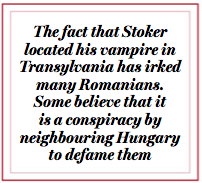 Romania, in 1431. He was five when as his father became the ruler of Wallachia. When he was aged around 11, he and his younger brother Radu were sent as hostages to the Ottoman Sultan Murad II as a guar- antee that his father, Vlad Dracul, would be loyal to the Turks. At 17, after his father was murdered and his elder brother Mircea bur- ied alive, the sultan sent him back to Wal- lachia as ruling prince. In just two months, he lost power and spent the next eight years in exile plotting to recover his throne. In 1456, Vlad Dracula returned for the second time as ruler of Wallachia, this time for six years. His next spell of exile lasted 12 years. He regained his Wallachian throne in 1476, but was killed in battle two months later. Vlad’s story became a myth in the 19th century, when modern Romania was in the making. His rough justice seemed exemplary to a society that strived—and still does—to settle down. A whole literature that glorified epe and his deeds was produced. Vlad’s myth was strengthened in the ’70s, dur- ing Nicolae Ceausescu’s reign. The mediaeval prince was praised in schoolbooks, statues of him were raised, restoration works started at his castle on the Arges river, books and articles on him were published. “In such a context, after the success of Florescu and McNally’s book, Dracula became a story that Romanians had to confront,” P ̆aduraru explained. The first reaction of the Ministry of Tourism officials was: let’s show them who epe really was; and tours concentrated on the history of the prince. Disappointed, foreigners who came to the country in search of Dracula reacted as expected: we’re not interested in your petty lord, we want our vampire.
Romania, in 1431. He was five when as his father became the ruler of Wallachia. When he was aged around 11, he and his younger brother Radu were sent as hostages to the Ottoman Sultan Murad II as a guar- antee that his father, Vlad Dracul, would be loyal to the Turks. At 17, after his father was murdered and his elder brother Mircea bur- ied alive, the sultan sent him back to Wal- lachia as ruling prince. In just two months, he lost power and spent the next eight years in exile plotting to recover his throne. In 1456, Vlad Dracula returned for the second time as ruler of Wallachia, this time for six years. His next spell of exile lasted 12 years. He regained his Wallachian throne in 1476, but was killed in battle two months later. Vlad’s story became a myth in the 19th century, when modern Romania was in the making. His rough justice seemed exemplary to a society that strived—and still does—to settle down. A whole literature that glorified epe and his deeds was produced. Vlad’s myth was strengthened in the ’70s, dur- ing Nicolae Ceausescu’s reign. The mediaeval prince was praised in schoolbooks, statues of him were raised, restoration works started at his castle on the Arges river, books and articles on him were published. “In such a context, after the success of Florescu and McNally’s book, Dracula became a story that Romanians had to confront,” P ̆aduraru explained. The first reaction of the Ministry of Tourism officials was: let’s show them who epe really was; and tours concentrated on the history of the prince. Disappointed, foreigners who came to the country in search of Dracula reacted as expected: we’re not interested in your petty lord, we want our vampire.
There was a very swift change of tone, and tours began to concentrate on Romanian su- perstition and lore that was in any way con- nected to Stoker’s novel. But after three or four days of such trips, tourists and guides alike inevitably ended by being really scared. In the end, tours combined the historic and the fictional Dracula. Today, there are more than 30 companies that organise vampire- oriented tours in Romania, most of which sell a mix of the two Draculas—the historic character and the literary one.
 We crossed into Transylvania via the spectacular Rucar-Bran Pass. On the way, we stopped at “King’s Stone” fortress in Bran, where Vlad was imprisoned after losing his throne for the second time. We joined the throngs of visitors who are convinced that the Spartan castle was Dracula’s home. I got out of there half-amused, half-disgusted. The guide had told us preposterous stories about epe , Dracula, and Stok- er. At the exit, I was confronted by an army of vendors offering kitschy souvenirs at prices aimed at foreign buyers. But since I was in Bran anyway, I couldn’t miss a visit to the Museum of Horror: an amaz- ing shack of ghosts that included a restaurant, especially designed for American and Japanese tourists. It recently added a 3D cinema, presenting horror movies.
We crossed into Transylvania via the spectacular Rucar-Bran Pass. On the way, we stopped at “King’s Stone” fortress in Bran, where Vlad was imprisoned after losing his throne for the second time. We joined the throngs of visitors who are convinced that the Spartan castle was Dracula’s home. I got out of there half-amused, half-disgusted. The guide had told us preposterous stories about epe , Dracula, and Stok- er. At the exit, I was confronted by an army of vendors offering kitschy souvenirs at prices aimed at foreign buyers. But since I was in Bran anyway, I couldn’t miss a visit to the Museum of Horror: an amaz- ing shack of ghosts that included a restaurant, especially designed for American and Japanese tourists. It recently added a 3D cinema, presenting horror movies.
By the time we got to Sighi oara, it was twilight. As we were rather thirsty, we went straight to Alchemy Bar, opened in the cellar of the house in which Vlad the Impaler was born. Here, you can sample age- old concoctions such as Four Boards, Paracelsus, Cognac of the Big Bear, or the Count’s favourite wines (New Moon, Full Moon, Moon So- nata). Sighi oara is a town where I’d love to live. The citadel has pretty much remained unchanged since the times when Vlad was strolling around on its cobbled streets. Located on the Târnava Mare River, the town was built by Saxons between the 12th and 17th centuries. Eleven towers guard Sighi oara’s walls, including the Tower of Tailors and the Tower of Shoemakers.
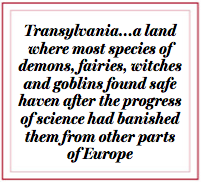 In 2001, Dan Matei Agaton, the Minister of Tourism, suggested that a Dracula Theme Park should be built in Sighi oara. “Hundreds of movies, over 1,000 books, thousands of articles, about 45,000 Dracula associations or fun clubs: it is absurd for a myth that can be used in so many ways abroad to be ignored in its own country,” he argued. Even though the idea was floated at a time when tourism was at its all-time low, the project met with huge op- position. Several other locations were suggested, but they were rejected too. Dracula Park is a quintessence of Romania’s mixed feelings towards Dracula: opportunism and violent rejection. Our next halt was Bistri a, to eat a Bram Stoker-inspired meal. In Dracula, a young English solicitor named Jonathan Harker takes a train from London to “the post town of Bistritz” on his way to Dracula Castle in Borgo Pass, Northern Transylvania, to finalise a property deal with Count Dracula. There, Harker dined on “Robber’s Steak” and drank “Golden Mediasch” wine at the Golden Krone Inn. A ho- tel of that name has since been built for tourists, and we dined on the same dishes and wines, before following Harker to Borgo Pass. Around me I could see foreign tourists happy to have finally arrived at Dracula’s Castle. However, I was pretty disappointed. Built in the 1980s, the castle looked more like a communist block of flats dream- ing of one day becoming a castle. But it wasn’t a complete washout. It was really nice to sip my morning coffee on the terrace, watching the valleys and forests all around. Sometimes, the fog got so thick, I got the feeling I was floating high up in the clouds.
In 2001, Dan Matei Agaton, the Minister of Tourism, suggested that a Dracula Theme Park should be built in Sighi oara. “Hundreds of movies, over 1,000 books, thousands of articles, about 45,000 Dracula associations or fun clubs: it is absurd for a myth that can be used in so many ways abroad to be ignored in its own country,” he argued. Even though the idea was floated at a time when tourism was at its all-time low, the project met with huge op- position. Several other locations were suggested, but they were rejected too. Dracula Park is a quintessence of Romania’s mixed feelings towards Dracula: opportunism and violent rejection. Our next halt was Bistri a, to eat a Bram Stoker-inspired meal. In Dracula, a young English solicitor named Jonathan Harker takes a train from London to “the post town of Bistritz” on his way to Dracula Castle in Borgo Pass, Northern Transylvania, to finalise a property deal with Count Dracula. There, Harker dined on “Robber’s Steak” and drank “Golden Mediasch” wine at the Golden Krone Inn. A ho- tel of that name has since been built for tourists, and we dined on the same dishes and wines, before following Harker to Borgo Pass. Around me I could see foreign tourists happy to have finally arrived at Dracula’s Castle. However, I was pretty disappointed. Built in the 1980s, the castle looked more like a communist block of flats dream- ing of one day becoming a castle. But it wasn’t a complete washout. It was really nice to sip my morning coffee on the terrace, watching the valleys and forests all around. Sometimes, the fog got so thick, I got the feeling I was floating high up in the clouds.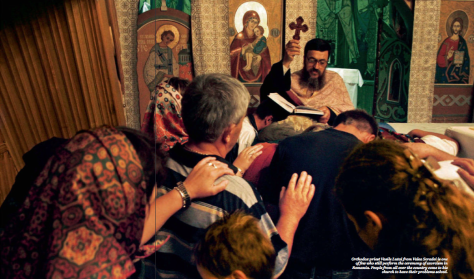
We then left for Marotinu de Sus, where, several years ago, some villagers had been sentenced to prison for desecrating graves. They had been described by media as vampire slayers. However, after all the problems they had encountered with the authorities, they did not even want to talk to us. We left meekly. Then the car broke down and night caught us asking for shelter in a decaying shack, in the remote village of Oltenia. At first, the old woman who owned the place refused to open her door. She thought the strigoi, the Romanian vampire, was calling her. As she told us later, she was convinced that her dead hus- band had turned into a strigoi and was tormenting her at night. She had exhumed him several times and pierced his chest with a stake, but with no results. How could I have not believed her? I was only four when the people in my village had dug up the grave of a strigoi. I was there in the cemetery that night. Indeed my obsession with vampires goes back to my childhood.
Before we knew it, our tour had come to an end. During their short time in the country, the American tourists in search of Dracula had fall- en in love with Romania. They were always carefree, taking picture af- ter picture of green leaves and grey buildings, amazed to see how cheap everything was, delighted by every cat, dog, or pig they set eyes on. I’d like to think they also changed a little during the days we spent together, that their individual natures were enhanced. Not all the places we visited were connected to Dracula. But Nicolae P ̆aduraru was an expert in getting people in touch with the spirit of places, able to tell a story about every hamlet, every mountaintop, every glass of wine, knowing when to scare and when to amuse, when to comfort with small talk and when to introduce serious matters. “Imagine,” he said just before we said good-bye. “Imagine that it rains cats and dogs. On a deserted street two men resentfully walk side by side, avoiding each other’s sight, their eyes filled with hatred: Count Dracula and Prince Vlad. They march together through the rain just because an unseen hand is holding above them both an umbrella”. Whose is it? I exclaimed to myself. Isn’t it ours?
Life on the Edge
On the centenary of the Panama Canal there’s never been a better time to discover the story of this iconic waterway, and the wildlife that lives beyond its banks.
 Tightrope walking along a leafy branch was a Northern Tamandua, a creamy coloured anteater with a coffee-brown nose. He was not the least bit perturbed by the ranks of binoculars as he tried to clamber to another woody hook in the dense tropical forest.
Tightrope walking along a leafy branch was a Northern Tamandua, a creamy coloured anteater with a coffee-brown nose. He was not the least bit perturbed by the ranks of binoculars as he tried to clamber to another woody hook in the dense tropical forest.
The Northern Tamandua was a one-off that day, his star mammal credentials diminished by the presence of extraordinary birdlife in this rich parcel of rainforest, just metres from the ships that transit through the Panama Canal.
The Panama Canal, which celebrates its 100th anniversary this year, cuts through 80km of the Central American isthmus from the Pacific Ocean to the Caribbean. A vessel embarking on its journey from the Pacific side (next door to the capital Panama City) will first encounter the Miraflores Lock, then the Pedro Miguel Locks, the Culebra Cut (the narrowest part of the canal), the manmade Gatún Lake and then Gatún Locks, all of which enable 30-40 transits a day with the average payment per ship totaling US$100,000 (£59,000). More than a million ships have transited the canal since it opened in 1914. An expansion project, expected to be completed in 2015, will see a new lane of traffic with new locks stretching 427m long and 55m wide – the combined size of four football pitches – with carrying capacity doubled. On each side of the Panama Canal lies humid lowland tropical rainforest, four national parks, the remnants of the gold routes used by the Spanish colonialists, and communities of the indigenous but displaced Emberá people. And all this neotropical nature, amid the watershed, is just a 30-minute drive (25km) from the capital.
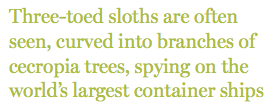 While a full-day or half-day transit of the canal is sold to visitors on pleasure boats, a much better view of container ship movements can be seen from the Miraflores Docks Visitor Center early in the morning. En route, it’s possible to glimpse tamarin monkeys playing on fences and American crocodile in the lagoons close to the Center. Even better, though, is to get out on a small boat for a more intimate encounter. Small, open-sided boats head into the crooks of Lake Gatún, where mudbanks and tree boughs crouching above the water, reveal close-up views of birds and animals. Commonly found poking about the water’s edge are purple gallinule, striated heron, and wattled jacana. The Jesus Christ lizard (common basilisk) can be seen sunning itself on broken branches while the exposed position of a small boat allows wide views of the tree canopy. Three-toed sloths are often seen, curved into branches of their favourite cecropia tree, spying on the world’s largest container ships as they power their way through the canal en route to their destination ports. With the capital city on the canal’s doorstep it’s tempting to visit the waterway and its wildlife by day, but serious wildlife enthusiasts will want to stay several nights at the outstanding Canopy Tower ecolodge – an ex US radar station – or at guesthouses in Gamboa, a canalside settlement, which housed Canal Zone employees before the US relinquished control of the canal to the Panama Canal Authority in 1999.
While a full-day or half-day transit of the canal is sold to visitors on pleasure boats, a much better view of container ship movements can be seen from the Miraflores Docks Visitor Center early in the morning. En route, it’s possible to glimpse tamarin monkeys playing on fences and American crocodile in the lagoons close to the Center. Even better, though, is to get out on a small boat for a more intimate encounter. Small, open-sided boats head into the crooks of Lake Gatún, where mudbanks and tree boughs crouching above the water, reveal close-up views of birds and animals. Commonly found poking about the water’s edge are purple gallinule, striated heron, and wattled jacana. The Jesus Christ lizard (common basilisk) can be seen sunning itself on broken branches while the exposed position of a small boat allows wide views of the tree canopy. Three-toed sloths are often seen, curved into branches of their favourite cecropia tree, spying on the world’s largest container ships as they power their way through the canal en route to their destination ports. With the capital city on the canal’s doorstep it’s tempting to visit the waterway and its wildlife by day, but serious wildlife enthusiasts will want to stay several nights at the outstanding Canopy Tower ecolodge – an ex US radar station – or at guesthouses in Gamboa, a canalside settlement, which housed Canal Zone employees before the US relinquished control of the canal to the Panama Canal Authority in 1999.
The Canopy Tower – established by politician-turned-conservationist Raúl Arias de Para in 1996 – runs daily trips out to birding and wildlife spots, with the busy programme scheduled to accommodate the interests of its long-stay guests.
Days begin, pre-dawn, at the Canopy Tower with the distant roar of the mantled howler monkey. Coffee is served on the observation deck of the Semaphore Hill radar station where scopes are used to spy sleeping sloth, chattering keel-billed toucans and tamarins beyond the white blossom of the bombax trees in the early morning light. The vast ships traversing the canal, just 2km away, can be seen poking up above the canopy.
Early morning treks begin by boarding the birdmobile, an adapted pick-up for birders who take advantage of the open-air seating to both hear and spot birds and mammals on the short drives.
All-day trips to the most popular birding route, the Pipeline Road inside the Soberanía National Park, are enhanced by snack stops plus lunch provided by the multi-tasking guides. The Pipeline – where the anteater’s foliage shelter had arched across the road – is a forest track that runs 17km through the jungle of the Soberanía National Park, a 22,000ha tract of tropical forest that borders a large swathe of the eastern side of the canal.
The Pipeline Road was an access route built for a World War Two pipeline constructed to transport oil across the isthmus should the waterway be bombed. The track starts metres from the great ditch that sluices across the isthmus and is considered one of the world’s premier birdwatching spots: the Panama Audubon Society holds an annual Christmas Day count. Its record is a sighting of 357 bird species on the Pipeline in 24 hours. The Soberanía park itself, is home to 525 bird species, 1,300 recorded plant species, and 105 mammals.
Mammals found here include speckled caiman, two- and three-toed sloth, armadillo, capybara, Geoffroy’s Tamarin, spider monkey, mantled howler and white-faced capuchin. Colourful feathered species include the magnificent frigate, herons, hummingbirds, trogons, the fine keel-billed toucan, flycatchers, antbirds, and tanagers (see the Top 5 birds of the Soberanía NP for the twitcher’s holy grail) while the tropical forest is rich in ferns and orchids.
A tack along the gravel Pipeline Road, framed by baby bamboo and bromeliads, is always fruitful, with frequent sightings. Huge exposed branches above the road are a favourite of trogons for perching. Clearings in the undergrowth are favoured by agoutis, and clear sightlines above the track allow views of squadrons of blue-headed parrots. Marching army ants are easy to spot because of the track-side clearings. Dozens of birds make a meal of their art prey flushed out by the commotion.
From Canopy Tower, birdmobiles head out past the Panama Railroad (opened in 1855), Gamboa town and the El Renacer prison, jail home of Panamanian dictator General Noriega. Just north of Gamboa is a site known as the Ammo Dump Ponds, where barn swallows swoop, capybara mooch in feathery grass, and Great Kiskadee and Great Breasted Martin potter and nest on the railway line wires overlooking the ponds, just metres from the canal.
Further north from the ponds, and just beyond the Soberanía park boundary, the Rainforest Discovery Center, a 40m high observation platform, towers above the canopy. From the tree-top platform the dark green canopy, patterned in the lilac of the jacaranda tree in spring, looks like some enormous polka dotted, rippling cloth. The platform’s an incredible spot for spotting flying red-lored parrots and keel-billed toucans and, through the scope, stunningly beautiful birds such as the blue cotinga, scarlet tanager, golden hooded tanager, as well as tiny species such as the ping pong ball-sized black capped pygmy tyrant.
The Plantation Trail, another rewarding spotting area, begins at the bottom of Canopy Tower’s Semaphore Hill. Once a road that led to coffee and cacao plantations, today it’s a tangle of stranglers and buttressed ceibas each side of a path showered with the pale pink and white flowers of the Membrillo tree. The forest here teems with blue morphos, and trogons which perch on naked branches, making them an easy spot through binoculars as well as the scope. A highlight is seeing well-camouflaged sunbitterns in a deep creek.
It’s no surprise that this Central American biodiversity hotspot has come under the telescope, and opening up scientific discovery to the public is the hallmark of the US Smithsonian Tropical Research Institute (STRI). In the northern stretches of Lake Gatún sprawls Barro Colorado, a large, jagged 1,564ha island, which forms a larger natural monument area managed by the Smithsonian. It’s a tropical powerhouse, established as a protected area in 1923, with 42km of trails and hundreds of plant, animal and bird species. Only day visits are allowed by advanced reservation.
The guided trip is somewhat ill-considered for keen wildlife enthusiasts as visitors must wait for the staff boat to get to the island in the morning. Prime wildlife spotting time is lost and then further wasted by coffee and a slideshow, meaning that visitors are led out onto the trails only at mid morning.
However, the STRI guide entertains with tales of the 27 camera traps on the island, the scientist training frog-eating bats to associate mobile phone ring tones with food, the discovery of the sea hare with a compound active against tropical disease visceral leishmaniasis, and the nocturnal ocelot found eating an iguana and her eggs in daylight, witnessed by staff from the kitchen windows.
With the US$5.25 billion (£3 billion) Panama Canal expansion, conservationists say little secondary forest area has been sacrificed and the wildlife has been relocated. Of greater threat they say, are the unexploited copper deposits in Colón province, which stretch across the Caribbean side of Panama. The Panama Environmental Advocacy Center (CIAM) says the mining concession area of 12,400 ha, which sits within the protected Mesoamerican Biological Corridor, will have a negative impact on rivers and wildlife, although the Panamanian National Environment Authority (ANAM) approved a socio-environmental impact study.
Three million years ago the land bridge that connects the North and South American continents arose, allowing the mingling of animal species and plants and creating one of the world’s richest biodiverse areas. Mining and deforestation may threaten its biodiversity but the country’s 40 national parks offer official protection, and its status as a biological powerhouse is celebrated by the Frank Gehry-designed Biomuseo (www.biomuseopanama.org/en) in Panama City. Shaped like the ruffled plumage of a scarlet macaw, it tells the story of the planet-altering land bridge creation three million years ago, and is supported by the Panamanian government, a non-profit organisation, and STRI, with a programme dedicated to educating the Panama’s youth on the country’s bioheritage.
Triumph Triple Speed
Tom Cruise rode one, so did Pam Anderson and Angelina Jolie.
There are two bike nuts in the FHM team (one now, the other one moved pastures last month) and several discussions over endless cigarettes and Parle Gs of late have involved Triumph. You see, we’re fan boys here at FHM which is why we are deeply concerned about the British bike manufacturer. First, they arrived late, second, the dealership network is still not in place (but they are working on it), and last but not the least, the buzz that they had created during the Auto Expo two years ago by launching of 10 drool-inducing models has somewhat died. So, the day we rode the Speed Triple, the task was simple – to explore
 Whether this would be the bike that would do for Triumph. Which is why we are happy to report that the Speed Triple is a devastatingly good, no frills man bike. No matter how old you are, how mundane your life is or how hassled you have been all week, when you ride a Speed Triple, the boy in you comes kicking out. And, there are several reasons for it. Needless, to say it has speed, its exceptional handling, build quality but what’s even more amazing is the pure ease of it all. Somehow it just makes sense. There is not one thing out of place. Generally sales representatives of manufacturers insist on giving you a pre-test ride spiel, when they explain in painful often excruciating detail about how you need to press the clutch, wait for that indicator near the speedometer to turn green or for that blue light to check for the ABS. With the Speed Triple, they give you just two instructions – first, it’s a very heavy bike so you need to be extra careful with the speed and handling. Second, keep safe distance with other commuters on the road because they tend to come too close in their hunt for a picture and toss you the key. In times when bikes are competing with sportscars for buttons and cup holders – Speed Triple is a phenomenally uncomplicated bike.
Whether this would be the bike that would do for Triumph. Which is why we are happy to report that the Speed Triple is a devastatingly good, no frills man bike. No matter how old you are, how mundane your life is or how hassled you have been all week, when you ride a Speed Triple, the boy in you comes kicking out. And, there are several reasons for it. Needless, to say it has speed, its exceptional handling, build quality but what’s even more amazing is the pure ease of it all. Somehow it just makes sense. There is not one thing out of place. Generally sales representatives of manufacturers insist on giving you a pre-test ride spiel, when they explain in painful often excruciating detail about how you need to press the clutch, wait for that indicator near the speedometer to turn green or for that blue light to check for the ABS. With the Speed Triple, they give you just two instructions – first, it’s a very heavy bike so you need to be extra careful with the speed and handling. Second, keep safe distance with other commuters on the road because they tend to come too close in their hunt for a picture and toss you the key. In times when bikes are competing with sportscars for buttons and cup holders – Speed Triple is a phenomenally uncomplicated bike.
That said, FHM’s first five minutes on this bike were spent just getting used to the weight of it, which is 214 kgs (it’s still lighter than most of the sports bike like a Suzuki V-Storm 1000), which means on U-turns, you pretty much end up reversing it like a car. Once you get somewhat used to the weight 70…80…100..120 kmph come up in quick time.
The downside in the ride was that, on our test drive commuters on the Delhi-Jaipur highway got too close for comfort while trying to take a picture. The Triple as we found out first hand is quite the amatuer Papparazzi favourit. Compared to the last three motorcyles we rode – Suzuki Inazuma, Indian Chief Classic and Harley Street 750 the brakes of Triple were the sanest. The bike is stable, and even if you ride it recklessly while cruising on the highway while your driver plays catch up in your Bimmer, it gives you a huge amount of confidence, and that’s why we liked it. The headlight of the Triple downplays its dimensions – which is a good thing or a terrible one, depending which side of the fence you are on. In all, Speed Triple, is a damn good weekend bike, a huge ego boost for manic monday.
GANDHI’S PEACEFUL FIGHT FOR JUSTICE
Standing off against armed soldiers and the might of the British Empire, Mahatma Gandhi led a nation to freedom without raising a fist in violence.
T he Sun streams down on a balmy spring day as thousands of Sikhs, Muslims and Hindus gather in the garden of the golden temple on the festival of Baisakhi. In the blink of an eye the peaceful gathering transforms into chaos. General Dyer, a British Indian Army officer, has entered with 90 soldiers clutching rifles. With one word they aim their guns at the unarmed civilians and fire. Madness and panic tears through the crowded garden as the defenceless citizens run for their lives and many stumble and are trampled to death.
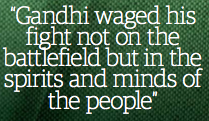 Some of the families fight their way to the narrow gates only to find them locked. Desperate men and women looking for safety fling themselves into the dark depths of a single well, but the drop is treacherous and later 120 lifeless bodies are removed. After ten minutes of continuous shooting, a dull silence finally falls. The wounded are left lying where they fall as people watch helplessly from afar, terrified of suffering a similar fate. This attack was aimed to not disperse, but to punish. The British put the death toll at 379, but Indian officials estimated the true figure was in excess of 1,500.
Some of the families fight their way to the narrow gates only to find them locked. Desperate men and women looking for safety fling themselves into the dark depths of a single well, but the drop is treacherous and later 120 lifeless bodies are removed. After ten minutes of continuous shooting, a dull silence finally falls. The wounded are left lying where they fall as people watch helplessly from afar, terrified of suffering a similar fate. This attack was aimed to not disperse, but to punish. The British put the death toll at 379, but Indian officials estimated the true figure was in excess of 1,500.
The Amritsar Massacre of 1919 would become a cornerstone in the Indian fight for Independence from British rule. After violent protests by the Indian Independence Movement the British government were tense and, fearing a conspiracy to overthrow them, invoked martial law, making it illegal for more than four people to assemble. Upon facing the mass crowd of unarmed
men, women and children, Dyer reports that he was “confronted by a revolutionary army.” The massacre was horrendous but did achieve something years of negotiations could not, it united three groups – Hindu extremists, pan- Islamists and Sikh revolutionaries – toward a single goal: freedom. The inflamed people still lacked something fundamental, though – a leader.
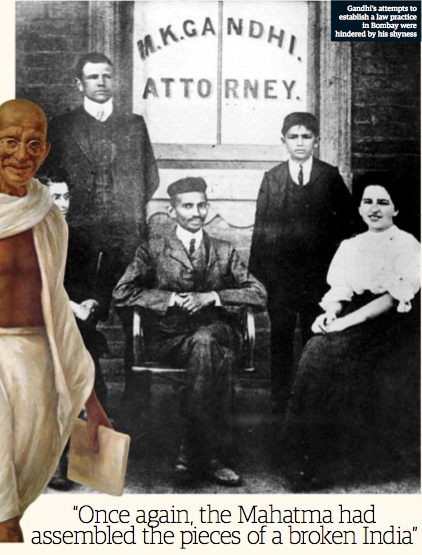 Mohandas Gandhi, who had previously encouraged Indian troops to join the British fight in the First World War, felt his trust and faith crushed in an instant. He compared the British government to “the fabled snake with a brilliant jewel on its head, but which has fangs full of poison” and felt a great force within him to rid the world of this venom. He concluded that independence for India was the only option, and with that decision he became the vessel for freedom for an impoverished and starving nation.
Mohandas Gandhi, who had previously encouraged Indian troops to join the British fight in the First World War, felt his trust and faith crushed in an instant. He compared the British government to “the fabled snake with a brilliant jewel on its head, but which has fangs full of poison” and felt a great force within him to rid the world of this venom. He concluded that independence for India was the only option, and with that decision he became the vessel for freedom for an impoverished and starving nation.
Dedicated to pacifism, Gandhi waged his fight not on the battlefield but in the spirits and minds of the people. He aimed to conquer the British not with military power, but spiritual force. The Indians were hungry for revenge, but Gandhi encouraged the masses to rid themselves of violence and disunity in order to bring about a similar change in the hearts of the British government.
Gandhi entered into the Indian Congress in 1920 as a nationalist, but he offered an alternative to the random violence of the masses and the resolutions and petitions of the law-abiding Congress. With his tours around the country and eloquent articles, this small, mild-mannered and yet, in his own way, powerful man had entranced the imagination of the people. This was exactly what the mass movement Congress wanted to achieve and Gandhi was made the figurehead of the non- cooperation movement.
Building on his strong faith and morality, Gandhi said, “If we trust and fear God we shall have to fear no one, not Maharajas, not Viceroys, not the detectives or even King George.” As rumours spread through the British government of this unpredictable man who would say and do anything, Gandhi finally stated his position outright to Lord Reading, the viceroy of India, in Young India on 15 December 1921: “Lord Reading must understand that non-cooperators are at war with the government. They have declared rebellion against it.” The demands had been laid down, and Gandhi and his growing band of followers were ready to unleash their own brand of resistance.
Clothing himself in the dress of the common man, Gandhi connected with all rungs of society. He became the Mahatma (great soul) and crowds swarmed to catch a glimpse of him. Travelling the county, Gandhi encouraged the people to rid themselves of British control by boycotting British products, adopting the use of local handicrafts and embracing the true essence of their homeland.
With its charismatic figurehead, the movement soon gathered momentum and when his fellow activists were arrested, Gandhi signed a manifesto that called on every soldier and civilian to abandon their posts and find another means of livelihood. To the shock of the British, thousands of people all over India followed the words of the Mahatma. However, as the movement gained momentum it took on a life of its own and Gandhi struggled to keep a firm grip on it. On 17 November 1921 violent riots erupted and Europeans were assaulted on the streets. Dismayed at the descent of his movement into that which he loathed most of all, violence, Gandhi used his body as a means of protest and fasted to quell the fire.
The violence confirmed British fears that the country was at boiling point and over one month 30,000 people were imprisoned. Harsh laws that prohibited volunteer organisations, meetings and processions were forcibly imposed. Fearing the revolution would be muffled, Congress appointed Gandhi as the sole executive authority, pressing the need for immediate action. He did not disappoint.
With the needs of the masses bearing down upon him, Gandhi called for mass civil disobedience which he outlined as, “a sort of general upheaval on the political plane – the government ceases to function […] the police stations, the courts, the offices etc all cease to be government property and shall be taken charge of by the people.” Gandhi encouraged a mass defiance of all laws to create the state of India, whether the British wanted it or not.
The movement came to a crashing halt before it could even begin though. In Chauri Chaura constables opened fire on a peaceful procession of protestors, expended their ammo and then barricaded themselves in the police station. Driven to frustration and desperation, the marchers set fire to the building. As the terrified policemen fled from the flames the protestors leapt on them, hacking 22 of them to pieces.
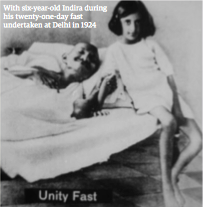 Horrified by this barbaric action under the guise of his peaceful movement, Gandhi revoked his plans for civil disobedience, fearing his nonviolent message had dissolved into total and utter chaos. Despite his immediate condemnation of the violence, on 10 March Gandhi was arrested. Polite, abiding and eloquent, he immediately pleaded guilty and asked the judge to enforce the highest penalty upon him, or else resign. Taken aback by the humility of this remarkable man, the judge commented that Gandhi was unlike anyone he had ever tried or was likely to try again before sentencing him to six years’ imprisonment.
Horrified by this barbaric action under the guise of his peaceful movement, Gandhi revoked his plans for civil disobedience, fearing his nonviolent message had dissolved into total and utter chaos. Despite his immediate condemnation of the violence, on 10 March Gandhi was arrested. Polite, abiding and eloquent, he immediately pleaded guilty and asked the judge to enforce the highest penalty upon him, or else resign. Taken aback by the humility of this remarkable man, the judge commented that Gandhi was unlike anyone he had ever tried or was likely to try again before sentencing him to six years’ imprisonment.
When Gandhi emerged from prison on 5 February 1924 it was to a very different India. Without his leadership the national unity had collapsed. He was accused of awaking the masses prematurely, to which he responded “I would do nothing to put them asleep again.” In response to the disunity and violence the country had been swept up in, Gandhi conducted a twenty one day fast. This seemed to work, and opposing groups met at a ‘Unity Conference.’ Once again, he had assembled the pieces of a broken India.
Ganhdi may have been a unifying force but even he couldn’t deny the fractures that ran through the country he loved, and for the next three years he moved away from politics, focusing on rebuilding the nation from scratch. In 1928, inspired by a successful large-scale nonviolent resistance by the peasants of Bardoli, Gandhi returned to the spotlight. Civil disobedience was embraced again and on 26 January 1930, Gandhi made his demands clear by publishing the Declaration of Independence of India.
 Using himself as a vessel for change, Gandhi announced he would lead the movement by protesting the salt tax that hit the poorest in the land by prohibiting them to produce their own salt. Frail and suffering with rheumatism, the 61-year- old and a growing band of marchers walked the 388 kilometres (241 miles) from Abermanti to Dandi. The marchers included an array of people, from the ostracised untouchables, the lowest castes of society, to decorated scholars. Many struggled to keep pace with their elderly but determined leader. Upon finally reaching Dandi, millions watched as Gandhi knelt to the ground, raised a lump of salty mud to the sky and declared, “With this, I am shaking the foundations of the British Empire.”
Using himself as a vessel for change, Gandhi announced he would lead the movement by protesting the salt tax that hit the poorest in the land by prohibiting them to produce their own salt. Frail and suffering with rheumatism, the 61-year- old and a growing band of marchers walked the 388 kilometres (241 miles) from Abermanti to Dandi. The marchers included an array of people, from the ostracised untouchables, the lowest castes of society, to decorated scholars. Many struggled to keep pace with their elderly but determined leader. Upon finally reaching Dandi, millions watched as Gandhi knelt to the ground, raised a lump of salty mud to the sky and declared, “With this, I am shaking the foundations of the British Empire.”
Gandhi was arrested, but his journey emblazed the hearts of the people and his arrest only served to further stimulate the masses. Less than a year later the government, under heavy pressure, released all civil-disobedience prisoners under the agreement that the movement was called off. But as the movement rose from the flames, Gandhi and almost the entire Congress were jailed once more.
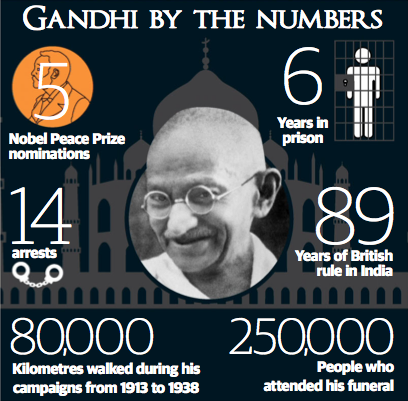 The British government acted swiftly and viciously to stop the ongoing rebellion at the source, but the people’s spirits could not be dampened so easily.
The British government acted swiftly and viciously to stop the ongoing rebellion at the source, but the people’s spirits could not be dampened so easily.
When Gandhi returned to politics in 1939, it was with complete focus on independence. The outbreak of war provided the ideal environment to finally achieve his goal. Outraged by India’s inclusion in the Second World War without any consultation, all congressmen resigned from office. Gandhi proclaimed the hypocrisy of India fighting in a war to achieve democratic freedom when Indians themselves did not enjoy such luxury. Escalating his demand for freedom, Ghandi launched the Quit India movement, encouraging passive resistance to withhold the much-needed Indian support in Britain’s hour of need. Gandhi urged Indians to ‘do or die’ to achieve the Freedom they had long fought for. The British reaction was instantaneous; the entire Congress Working Committee was arrested. Riots tore across the country as the fury of the people was unleashed upon any symbol of British rule – burning post offices, police stations and courts.
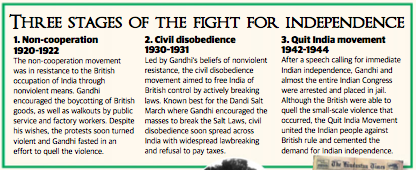 After fasts in prison and struck down with ill health, Gandhi was released. Bent but not broken, he returned as the head of the non-cooperation movement in 1944. Fearing a revolution, the
After fasts in prison and struck down with ill health, Gandhi was released. Bent but not broken, he returned as the head of the non-cooperation movement in 1944. Fearing a revolution, the
British finally hammered out the agreement for independence in March 1947 and on 15 August that same year it became official.
![]() The long-awaited independence can be attributed to many factors, but no one man captured the hearts and minds of the Indian people like Mahatma Gandhi. The freedom the masses needed had been achieved long before independence was declared. Gandhi, with his inspiring words, actions and sacrifices had freed the people not only from British rule, but also from the prisons in which their minds had been enslaved.
The long-awaited independence can be attributed to many factors, but no one man captured the hearts and minds of the Indian people like Mahatma Gandhi. The freedom the masses needed had been achieved long before independence was declared. Gandhi, with his inspiring words, actions and sacrifices had freed the people not only from British rule, but also from the prisons in which their minds had been enslaved.
Around the World in 12 Beers
The brews to reach for whether soaking up rays abroad or on your patio…
01 Chase after a Mexican tequila shot
The craft beer movement has arrived in Mexico. This delicious brewski is named after their Day Of the Dead and looks the part, too. Death Becomes You Amber Ale, 5.5% ABV
02 Order during an American football game
Anchor is the Us’s first and oldest craft brewery with roots back to the Californian gold rush. Fun fact: ‘steam’ is an old American nickname for beer. Anchor Steam Beer, 4.9% ABV
03 Refresh in the Moroccan bazaars
This is the North African country’s premium beer. Its sweet note matches perfectly to moroccan tagines; a great excuse for your holiday weight gain. Casablanca Beer, 5% ABV
04 Crack open in the aussie outback
As Cooper’s is the only fully Australian major brewery in the world, headed up by the original family, you won’t get a truer taste of Oz than this. Cooper Brewery, Original Pale Ale, 3.7% ABV
05 Raise a glass to Cypriot Jesus
The Cyprus Orthadox Church owns 20% of this brewery, making it a beer backed by God himself. the big man in the sky must be happy that one in three beers bought on the island are this, too. KEO Beer, 4.5% ABV
06 Suck back at the spanish bull ring
San miguel is just too easy to find in the UK. make it a true spanish holiday with its punchier brother, mahou. Mahou Beer, 5.5% ABV
07 pair with italian pizza twice winning the medal for world’s
Best pale lager, Italians not only love drinking this brew, but eating it too, in the form of a beer cheese named sbarro. Birra Menabrea, 3.5% ABV
08 Make a toast in the aCropolis of athens
This was Greece’s first attempt at a truly Greek beer. It wonan international award in 2001, which helped it become the most popular beer in the country. Mythos Lager Beer, 4.7% ABV
09 Ice next to your Portuguese barbecue
Men can reach nirvana in portugal by catching some fresh fish, slapping it on a scorching grill, and washing it down with this 100% natural beer. Sagres Pale Lager, 5% ABV
10 Pour out with your Japanese sensei
Marrying british hops with Japanese sake brewing methods, you can blame Kiuchi brewery’s little owl logo for all the falling over you do after few of these 7% beasts. Hitachino Nest Japanese Classic Ale, 7% ABV
11 Bunker down in a german beer hall
You’re spoilt for choice for ace beers in Germany, but here’s our pick, purely because it earned the affectionate nickname ‘wobbly’ by RAF troops. Warsteiner, 4.8% ABV
12 share a bière with a French lady
Our supermarket shelves are full of premium lagers from France, so find an under-the-radar bottle like pelforth, a French brewery famed for beers so strong they’ll put hairs on your eyeballs. Pelforth Brune, 6.5% ABV
Sex, Slavery and a Slippery Truth
SOMALY MAM: THE HOLY SAINT (AND SINNER) OF SEX TRAFFICKING. SOMALY MAM SAVED COUNTLESS GIRLS IN CAMBODIA. DOES IT MATTER IF KEY PARTS OF HER STORY AREN’T TRUE?
Nestled on the banks of the Mekong River, Thloc Chhroy looks like the typical rural Cambodian village. Mango trees thick with fruit are everywhere. Fishermen cast their nets from small motorboats. Elders lounge in hammocks, while children on bikes too big for them bounce along rutted dirt tracks.
But this is no ordinary village. Every now and then, a shiny four-wheel drive bounces down the dirt track that leads to a refuge center of an organization whose name in French is Agir Pour Les Femmes en Situation Précaire, or AFESIP. (Rough translation: Helping Women in Danger.) Inside the vehicle you may spot a powerful government official, a heavyweight journalist or even an American movie star. They all come to meet with AFESIP’s president and co-founder, Somaly Mam, and support her courageous work fighting sex traffickers.
Mam is one of the world’s most compelling activists, brave and beautiful, and her list of supporters is long and formidable. Former U.S. secretary of state Hillary Clinton and actresses Meg Ryan, Susan Sarandon and Shay Mitchell, as well as New York Times Pulitzer-winning columnist Nicholas Kristof, have all toured AFESIP centers in Cambodia. Queen Sofia of Spain has for years promoted Mam’s cause and even visited her in the hospital last year when she fell ill. Mark Zuckerberg’s former
PR guru, Brandee Barker, whom The New York Times recently described as “perhaps the most sought-after image consultant in the startup world,” is a board member for the Somaly Mam Foundation, and Facebook Chief Operating Officer Sheryl Sandberg is an advisory board member.
Mam has raised millions with a hectic schedule of meetings all over the globe with the good, the great and the super-rich—from the U.N.’s Ban Ki-moon to the pope. One day she will be speaking at the White House, and the next day she’ll be enthralling schoolchildren in a remote corner of Cambodia.
Mam claims to have rescued thousands of girls and women from sex trafficking, a dangerous and formidable feat. Her story becomes even more inspiring when you hear her shocking tale of being sold into sexual slavery. In 2005, she published her autobiography, The Road of Lost Innocence, which became an international best-seller. Mam was one of Time’s 100 most influential people in 2009 and has over 400,000 followers on Twitter.
She has done so much for so many, does it matter that key parts of her story aren’t true? This is a story about a story—but not quite the amazing one Mam has been telling at cocktail parties in Manhattan and Beverly Hills, or on The Tyra Banks Show. Nonetheless, it’s an astonishing tale.
Book of a Genesis
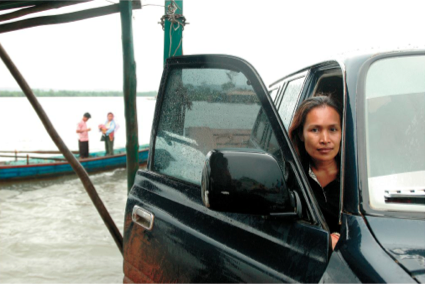 In 2011, Mam sat down with Sandberg at Fortune magazine’s Most Powerful Women summit and told the hushed audience what had motivated her to become a crusader against sexual slavery. “I have been sold in the brothel by the man who come and tell me that he’s my grandfather,” she said. “I stayed in the brothel nearly then 10 years. The brothel owner bring us all together, we all sit on the ground, and he tell us we have to do what he ask us to do. But one girl…she refused to do what he asked to do so he take a gun and kill her, so that is the day that I have been escaped from the brothel.”
In 2011, Mam sat down with Sandberg at Fortune magazine’s Most Powerful Women summit and told the hushed audience what had motivated her to become a crusader against sexual slavery. “I have been sold in the brothel by the man who come and tell me that he’s my grandfather,” she said. “I stayed in the brothel nearly then 10 years. The brothel owner bring us all together, we all sit on the ground, and he tell us we have to do what he ask us to do. But one girl…she refused to do what he asked to do so he take a gun and kill her, so that is the day that I have been escaped from the brothel.”
Mam declined to be interviewed by Newsweek for this article and has declined numerous requests for comment since I started reporting on inconsistencies in her stories in 2012. But she has repeatedly claimed that her tragic tale of abuse began in 1979 with a voyage through the rolling hills of Mondulkiri, a part of Cambodia that back then was still dense forest. Accompanied by a man she identifies only as “Grandfather,” she trundled passed stilted homes inhabited by tribal villagers and forests that were home to sacred spirits.
In her autobiography, Mam tells how “Grandfather” turned her at a very young age into his domestic slave. He would gamble and drink, and when he came home, he sometimes beat her until she bled. He eventually sold her as a virgin to a Chinese merchant and then forced her to marry a violent soldier when she was just 14. She was later sold to a brothel in Phnom Penh, where she recalls being tortured with electrodes hooked up to a car battery.
But after years of servitude, Mam writes, the brothel owner, Aunt Peuve, began to give her more freedom. She still worked in the brothel, but she sometimes lived with some of the foreigners working for the plethora of humanitarian organizations that rushed in to help the country recover from the depredations of the Khmer Rouge. In 1991, she met Pierre Legros, a young Frenchman working as a biologist in Phnom Penh. This meeting, she writes, changed her outlook on life and convinced her to leave the world of prostitution for good.
She and Legros got married and moved to France in the early 1990s. Legros says he was amazed at how easily Mam took to life in Europe. “She found a job as a maid. She found a job before me. She handled the situation very quickly…. It was the Somaly that I knew. It was a woman, a warrior. She was a small warrior. I worked with her and made a big warrior out of her.”
In 1994, they returned to Cambodia. Legros had found a job working for Doctors Without Borders, and Mam began doing volunteer work in one of the organization’s clinics for patients with sexually transmitted diseases. Cambodia then had a sex trafficking crisis and the highest rate of HIV/AIDS in the Asia-Pacific region. Mam says her past and future were staring her in the face: Her destiny, she decided, would be to help girls escape her country’s notorious brothels. Mam, Legros and a friend started AFESIP, a small but feisty nongovernmental organization.
Mam and Legros were an intrepid and attractive couple fighting for the most worthy of causes, and the media soon began to take an interest. At first they were hard-pressed for cash, but a France 2 documentary broadcast in 1998 gave AFESIP major exposure and helped get Mam chosen as one of seven celebrated women honored with the prestigious Prince of Asturias Award for International Cooperation. Among the other winners were Emma Bonino, a former European commissioner for humanitarian aid, and Olayinka Koso-Thomas, a Nigerian-born doctor who had campaigned for decades against the genital mutilation of women.
Legros was now thinking big, far beyond the borders of Cambodia: AFESIP satellites offices were opened in Laos, Thailand, Vietnam, France and Switzerland. He knew that Mam needed more media exposure if their grand ambitions were to be achieved. “We knew that the visibility on television is very short-lived. You’re known and then you disappear. I always said to Somaly, ‘The real thing to do after the television is to write a book.’”
After Mam made a televised appearance with Bonino in the early part of the past decade and talked about her own story, several publishers expressed interest in a book deal. Legros recalls that an agent working for one publishing house in Paris burst into tears while listening to Mam tell her story in her office. Published in France in 2005; published in America three years later, The Road of Lost Innocence was translated into Japanese, Swedish and over a dozen other languages.
About a year later, Mam set up the Somaly Mam Foundation, the next step in her long journey to international recognition. As the years went by, Mam and her organization went from triumph to triumph, bringing in more and more money. Mam is now a superstar in the mostly gritty world of nonprofits, and a jet-setting global icon, but she always insists that her real life is with her “girls” back in Phnom Penh.
A Chilling Performance
 Mam has done much for those girls, and a few of them have done much for her. Mam’s success has been due to her energy, her fearlessness and her charisma. It is also due to the shocking stories she and her girls have told.
Mam has done much for those girls, and a few of them have done much for her. Mam’s success has been due to her energy, her fearlessness and her charisma. It is also due to the shocking stories she and her girls have told.
In 2009, Nicholas Kristof wrote in The New York Times about a girl named Long Pross, who had finally summoned the strength to tell her stunning story of sexual slavery. He reported that a woman had kidnapped Pross and sold her to a brothel, where she was beaten, tortured with electric wires, forced to endure two crude abortions and had an eye gouged out with a piece of metal by an angry pimp. Pross, Kristof said, was rescued by Mam and became part of her valiant group of former trafficking victims fighting for a world free of sexual slavery.
Pross also told her disturbing story on Oprah and appeared in the PBS documentary Half the Sky. “Believe it or not, when I returned home, my mother and father didn’t want me around. I wasn’t considered a good person,” she says in the documentary.
Equally hard to believe is the fact that Pross’s family, neighbors and medical records all tell a different story. Dr. Pok Thorn says he performed surgery on Pross when she was 13, after her parents brought her to a hospital with a nonmalignant tumor covering her right eye. Photographs in her medical records clearly show the young girl’s eye before and after the surgery.
So how did she come to be one of Somaly Mam’s girls? Te Sereybonn, director of Cambodia’s Takeo Eye Hospital back then, says his staff contacted AFESIP to see if they could admit Pross to one of their vocational training programs.
Another of Mam’s biggest “stars” was Meas Ratha, who as a teenager gave a chilling performance on French television in 1998, describing how she had been sold to a brothel and held against her will as a sex slave.
Late last year, Ratha finally confessed that her story was fabricated and carefully rehearsed for the cameras under Mam’s instruction, and only after she was chosen from a group of girls who had been put through an audition. Now in her early 30s and living a modest life on the outskirts of Phnom Penh, Ratha says she reluctantly allowed herself to be depicted as a child prostitute: “Somaly said that…if I want to help another woman I have to do [the interview] very well.”
She, like Pross, was never a victim of sex trafficking; she and a sister were sent to AFESIP in 1997 because their parents were unable to care for all seven of their children.
Lost Innocence
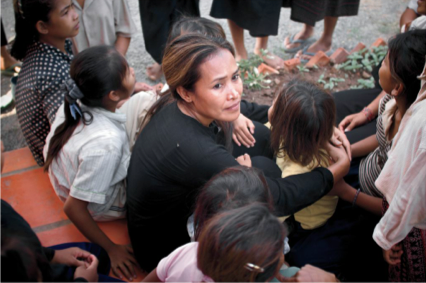 Interviews with Mam’s childhood acquaintances, teachers and local officials in the village where she grew up contradict important, lurid details in her autobiography. Many of the villagers in Thloc Chhroy say they never met or even saw Mam’s cruel “Grandfather,” the rich Chinese merchant who allegedly raped her or the violent soldier she says she was forced to marry.
Interviews with Mam’s childhood acquaintances, teachers and local officials in the village where she grew up contradict important, lurid details in her autobiography. Many of the villagers in Thloc Chhroy say they never met or even saw Mam’s cruel “Grandfather,” the rich Chinese merchant who allegedly raped her or the violent soldier she says she was forced to marry.
Orn Hok, a former commune chief, remembers well the day Mam arrived in the village, noting, “Somaly came here with her parents. She is a daughter of Mam Khon and Pen Navy.”
Pen Chhun Heng, now in her 70s, says she is a cousin of Mam’s mother and rejects the notion that Mam was adopted or that she was raised (or kept) by “Grandfather.”
Sam Nareth, a childhood friend of Mam’s, says Mam first attended school in the village in 1981 and remained there until she got her high school diploma. “She finished secondary school in 1987, and Somaly and I went to sit the teachers exam in Kompong Cham together.”
Thou Soy, who was the director of Khchao High School in Thloc Chhroy, distinctly remembers Mam attending classes between 1981 and 1987, as does the current commune chief, Thorng Ruon, and his two predecessors. Mam was well-known and popular in their small village, a happy, pretty girl with pigtails.
Not even Mam can keep the story straight. In February 2012, while speaking at the White House, she said she was sold into slavery at age 9 or 10 and spent a decade inside a brothel. On The Tyra Banks Show, she said it was four or five years in the brothel. Her book says she was trafficked when she was “about 16 years old.”
Mam’s confusion isn’t limited to her book, or the backstory for some of “her girls.” In 2012, she admitted —after being confronted with some of my early reporting —that she had made false claims in a speech to the U.N. General Assembly in which she said eight girls she had rescued from the sex industry were killed by the Cambodian army after a raid on her shelter in 2004.
Rights workers and police officials, including Deputy National Police Chief Lieutenant General Un Sokunthea, who was head of the Interior Ministry’s anti-human trafficking department in 2004, and a senior official at the U.N.’s Office of the High Commissioner for Human Rights in Phnom Penh, have also strongly denied highly publicized claims by Mam, in Glamour magazine and The New York Times, that traffickers kidnapped her 14-year-old daughter in 2006 and videotaped the girl being gang-raped in retaliation for Mam’s work. Legros and Aarti Kapoor, a former legal adviser to AFESIP, both say the young girl was never kidnapped; instead, they say, she had run away from home with her boyfriend.
Legros, who split from Mam in 2004 and lost custody of their children in Cambodia, now says he is not surprised that the truthfulness of her autobiography is being questioned. And although he brokered the book deal and selected the ghostwriter, he denies helping Mam make up her stories. He adds, however, that “I did not search the truth. My objective was that she felt good with herself.”
Mam Dearest
 Many of the people who have been charmed by Mam refuse to believe that she is anything other than what she claims to be. They talk of how inspiring she is and how holy her mission is. Fashion photographer Norman Jean Roy, who in 2008 documented Cambodia’s sex trade and shot some heartrending portraits of Long Pross, once said of Mam, “One of the things that’s unique about her is that she has this almost saint-like quality about her when she walks into a room, when she walks around the children.”
Many of the people who have been charmed by Mam refuse to believe that she is anything other than what she claims to be. They talk of how inspiring she is and how holy her mission is. Fashion photographer Norman Jean Roy, who in 2008 documented Cambodia’s sex trade and shot some heartrending portraits of Long Pross, once said of Mam, “One of the things that’s unique about her is that she has this almost saint-like quality about her when she walks into a room, when she walks around the children.”
But those who have worked with Mam in Cambodia say there is a vast difference between the image she puts forward in the media spotlight and the one she shows in Phnom Penh. “[With donors], she’s very polished and very on and very charming…exceedingly charming,” says Candace Blase, who worked as a volunteer psychologist for AFESIP in 2011. “And when people are not there, she can be tyrannical; she’s moody, she’s erratic, she’s entitled.” Blase adds that she saw Mam ordering the girls she looks after to carry out personal chores for her.
Another former employee of the Somaly Mam Foundation in Cambodia recalls conversations with Mam in which she said she was invincible. “She feels unstoppable. She used to talk to me about wanting to put things in people’s food and how easy it would be to poison someone.
“It was such a traumatic and hostile environment,” the former employee continues. “We were treated very much in a hostile and aggressive way. You’re either part of the group or you’re not, and if you’re not part of the group, bad things can happen to you. And that was said in sometimes very direct terms.”
Former employees in Cambodia of both AFESIP and the foundation admit they knew about some of the questionable techniques used to raise awareness and funding, but they say nobody spoke up due to a mixture of fear of Mam and threats from others. “Why does everybody keep quiet about everything?” Blase asks. “I think it’s very hard to accept that a woman who is in a nurturing position, which she sort of is, has the capacity to be the way Somaly is…. People keep their mouths shut because it’s in their own self-interest to do so.”
Daniela Papi, founder of PEPY, an organization that promotes education and youth leadership, argues that those doing heroic aid work become immune to criticism. “Most people want to believe that people are good,” she says. “We see this hero and we buy into the hero, and actually the person we are defending is ourselves. It’s not them anymore, it’s yourself for being duped.”
According to a close acquaintance of Mam’s in Phnom Penh, who insisted on remaining anonymous for fear of retribution, there have been doubts about Mam’s life story for years, but “it’s all about image, getting to the big shot who has a lot of money and who feels sorry for this kind of story. They’re very successful, and they have been very successful in an incredible way because they connect with the right people, and they have all the movie stars, famous rock stars and famous people supporting them, and [all those people] are still being taken for a ride now.”
“Pull Out the Most Gory Story”
At the heart of the questions surrounding Mam is a debate within the nonprofit sector on the acceptable tactics for fundraising and educating the public. For a long time, there has been a strong push to move away from using children to raise funds. “If your goal is fundraising, you actually have an incentive to pull out the most gory story,” Papi explains, “and so we get completely false realities of the world.”
Experts in sex trafficking say that while it is a serious problem, the scale and dynamics of the situation are often misunderstood, in part because of lurid, sensationalistic stories such as those told by Mam and her “girls.” In 2009, 14 organizations and academics, including George Soros’s Open Society Foundations, wrote a letter to Salty Features, an independent film production company based in New York, to thank it for its interest in making a film about Mam’s work in Cambodia.
But they advised against having the documentary focus on Mam due to AFESIP’s lack of understanding of the sex industry. In an interview for Euronews in 2012, Mam said girls as young as 3 are being held in Cambodian brothels. Experts in the field say that is almost unheard-of. Patrick Stayton, who formerly ran the Christian, faith- based International Justice Mission (IJM) in Cambodia, says, “They may have had a supply of younger girls between the age of 14 and 17,” but adds, “We’ve never seen prepubescent girls, or very, very rarely.”
“[O]ver the last 10 years, the public justice system’s response to commercial sexual exploitation of children has improved significantly,” IJM stated in a report last year, noting a huge difference in donor funding for projects dealing with child victims of the sex industry and sexual abuse. “The decrease has been noted most within the group of young minors.”
Thomas Steinfatt, a professor of statistics at the University of Miami, has done several reports on sex trafficking for the U.N.’s Inter-Agency Project on Human Trafficking. In a 2008 study, for which he spent months conducting surveys in all corners of Cambodia, he estimated there were no more than 1,058 victims of trafficking in Cambodia and has said the situation has improved markedly since then.
The number of children, both those observed as sex workers and those mentioned by management or by sex workers in the 2008 data, was 127, with 11 of the children verifiably under age 15 and six under age 13. The high-end estimate for the number of children likely involved in sex work in Cambodia in 2008 was 310 children.
In response to a newspaper story about victim stories allegedly fabricated by Mam, Sébastien Marot, the executive director of Friends International, an organization that helps train and educate children in precarious situations, posted a response on the organization’s website: “A large number of organizations get sucked into using children to raise funds: making them talk about the abuse they survived in front of a camera, having their picture in a pitiful situation published for everyone to see. In worst cases, the truth is distorted or the stories invented to attract more compassion and money. The impact on the lives of these children is terrible: If they come from an abusive situation, such a process re-traumatizes them and in any case it stigmatizes them forever.”
A Crack in the Wall
I have spent over two years in Europe and Cambodia unraveling Mam’s many stories through a series of newspaper articles, and for most of that time, she, AFESIP and her foundation have stonewalled. They have resolutely stood behind their leader, their hero. It was only in the past two months, while I was reporting this story, that cracks started to appear.
In April, after repeated requests from Newsweek for an interview with Mam, Gina Reiss-Wilchins, the foundation’s executive director, said in a statement on the foundation’s website: “Following an internal review, the Foundation has recently launched an independent, third-party investigation to further examine these claims. Somaly Mam is in full support of this review. We can only hope that this does not deter other survivors from sharing their experiences, because it is their courageous voices that bring promise of a world free from trafficking.”
The foundation’s board retained the law firm Goodwin Procter, which has offices in the U.S., Europe and Asia. The firm also declined to speak to Newsweek, citing attorney- client privilege. Goodwin Procter and the Somaly Mam Foundation also declined to say when the investigation would be completed and if the results would be shared.
In April, Mam spoke to her supporters about the controversies swirling around her in a statement posted on the foundation’s website. “Many of you know my story of what I have been through. This pain never leaves me…. I have lived my life day by day, with love and forgiveness, and the belief that helping others could give them voice and choice and create change. I wrote my book to shed light on the lives of so many thousands of other women who have shared my fate. They have no voice, so I let my voice stand for theirs.”
That message still seems to resonate with many of the people who admire Mam. In October, a post on what purports to be her Facebook page said: “I Fall, I Rise, I Make Mistakes, I Live, I Learn, I’ve been Hurt, But I’m Alive, I’m Human and I’m not perfect but I learn every day and with every one to be better, but I promise you never perfect…teach and show me on the positive way…thanks.”
In response, one of her supporters wrote: “I’ve been there myself and though mistakes have been made along the way, they were often done so with a much more powerful intention…and that has proved true here. Those mistakes have led to helping so many people and bringing international attention to a VERY serious problem…kudos to you!”
Public Enemy Number One – Al Capone
Arriving in Chicago as a minor league mobster, Al Capone helped build an empire of prostitution, bootlegging and murder that made him a notorious household name.
The needle skipped as the gun barked twice in the killer’s hand, the record player screeching into the silence of the restaurant’s corridor as its owner crashed to the floor, blood pooling out onto the polished tiles.
Giacomo ‘Big Jim’ Colosimo, his body cooling from its exit wounds, had recently left his wife, filing for divorce and skipping town to marry a 19-year-old cabaret singer. His ex-wife, Victoria Moresco, or one of her brothers, was the prime suspect in this crime of passion, but the police knew enough to pay a visit to two of Colosimo’s associates – the genial Johnny Torrio and his sidekick, the disquieting Alfonse Capone, three nasty scars on his cheek contorting as he smiled. “Big Jim and me were like brothers,” claimed Torrio. “Mr Colosimo and me both loved opera”, added Capone. “He was a grand guy.” Colosimo’s murder on 11 May 1920 is still regarded as unsolved, but perhaps it’s a crime that Chicago Police Department chose to leave that way. For nearly a decade Colosimo had ruled Chicago through hard graft and intimidation – running over 100 brothels with his wife – and extorting protection money from most of the city’s illegal gambling dens, the profits snaking through the entire city, supplementing the meagre wages of the cop on the street corner and boosting the bank account of the city’s two-time mayor, William ‘Big Bill’ Hale Thompson.
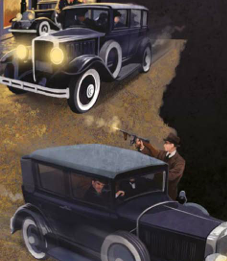 Chicago was a rough town. Booming in the early 1920s thanks to heavy industry and cheap labour, the Windy City was a Wild West frontier town with chimney stacks instead of cacti and bullet- riddled Model-T Fords in lieu of horses. “She was vibrant and violent,” wrote local journalist Robert St John, “stimulating and ruthless, intolerant of smugness, impatient with those either physically or intellectually timid.”
Chicago was a rough town. Booming in the early 1920s thanks to heavy industry and cheap labour, the Windy City was a Wild West frontier town with chimney stacks instead of cacti and bullet- riddled Model-T Fords in lieu of horses. “She was vibrant and violent,” wrote local journalist Robert St John, “stimulating and ruthless, intolerant of smugness, impatient with those either physically or intellectually timid.”
Capone had arrived in Chicago from New York in 1919 to work for his old friend Torrio, who had earned Colosimo’s trust by chasing off a rival extortion racket and stuck around as the boss’s second in command. Capone soon put the feared reputation he had enjoyed back home to work as a debt collector, seeing first hand how Colosimo’s operation held a stranglehold over the underworld; gambling dens who refused to pay up for Big Jim’s protection would either find themselves the subject of a convenient police raid or – worse still – a visit from Capone, who was more than happy to break a few legs and mess up a card table with a swing from his baseball bat.
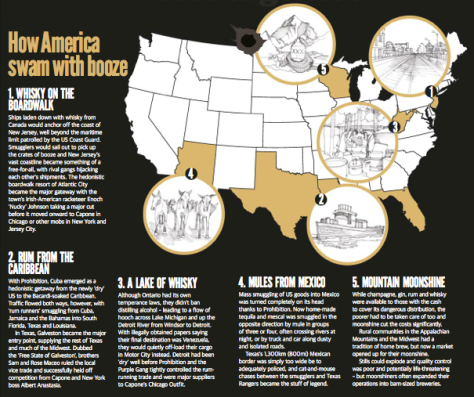 Compared to the claustrophobic Big Apple, where half a dozen gangs butted heads over a block at a time, Torrio and Capone found Chicago fertile for expansion, as the only thing that stood in their way was their own boss. In January 1920 the rules of the game changed again as the 18th Amendment to the US Constitution came into effect. Also known as the Volstead Act, which prohibited the production, transportation and sale of alcohol – but not the consumption – Prohibition meant a huge swathe of the population were suddenly transformed into potential customers. Torrio and Capone saw that this was a revenue stream with the potential to dwarf even prostitution and racketeering, but to their dismay Colosimo was having none of it. When Colosimo was conveniently removed from the picture, John ‘The Fox’ Torrio became the boss of the Chicago
Compared to the claustrophobic Big Apple, where half a dozen gangs butted heads over a block at a time, Torrio and Capone found Chicago fertile for expansion, as the only thing that stood in their way was their own boss. In January 1920 the rules of the game changed again as the 18th Amendment to the US Constitution came into effect. Also known as the Volstead Act, which prohibited the production, transportation and sale of alcohol – but not the consumption – Prohibition meant a huge swathe of the population were suddenly transformed into potential customers. Torrio and Capone saw that this was a revenue stream with the potential to dwarf even prostitution and racketeering, but to their dismay Colosimo was having none of it. When Colosimo was conveniently removed from the picture, John ‘The Fox’ Torrio became the boss of the Chicago
Outfit, and by his side stood Al Capone. With Torrio’s blessing, Capone set about covertly reopening breweries and distilleries that had been closed by the Volstead Act, setting up an ambitious distribution network to the city’s mean speakeasies with the help of his older brothers Ralph and Frank Capone. “Nobody wanted Prohibition,” he said. “This town voted six to one against it. Somebody had to throw some liquor on that thirst. Why not me?”
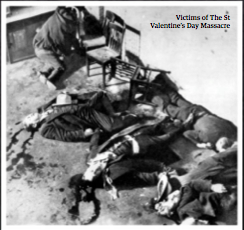 The loyal Ralph was put in charge of one of the Chicago Outfit’s legal enterprises, a soft-drink bottling plant which earned him the nickname ‘Bottles’, while Frank honed a reputation for savagery that overshadowed even Al’s. Estimated to have been responsible for 300 deaths, Frank infamously advised his little bother that, “you get no talk back from a corpse.”
The loyal Ralph was put in charge of one of the Chicago Outfit’s legal enterprises, a soft-drink bottling plant which earned him the nickname ‘Bottles’, while Frank honed a reputation for savagery that overshadowed even Al’s. Estimated to have been responsible for 300 deaths, Frank infamously advised his little bother that, “you get no talk back from a corpse.”
It was happening under Johnny Torrio’s command but there was no doubt that bootlegging was Al Capone’s kingdom, and he was soon to pay for it in blood as 1923 saw the downfall of Chicago’s sticky fingered mayor, ‘Big Bill’ Thompson. The Democrat William Emmett Dever was voted in on a pledge to sweep the gangs from the city, and Torrio entrusted Capone with an urgent relocation to Cicero – the
fourth largest city in Illinois – just outside of Chicago and the legislative reach of ‘Decent Dever.’ While Torrio and Capone had ruled their criminal empire largely as Colosimo had – with money in the right pockets and threats whispered in the right ears – the takeover of Cicero was an overt display of force, as Capone set about rigging the mayoral election for the mob’s pet politician, Joseph Z Klenha.
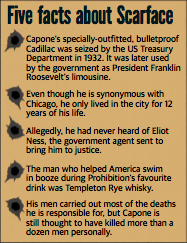 On the eve of the 1924 mayoral election, Frank Capone burst into the office of the Democrat candidate for Cicero with some of his thugs, beating the hopeful to a pulp with their pistol butts, trashing his office and firing their revolvers into the ceiling as a preamble for the next day’s audacious takeover. As cold, grey 1 April dawned, Capone hoods stormed into the polling stations to screen voters, snatching their ballot papers from them to ensure they were ticking the right box. Election officials with the stones to intervene were dealt with; a Democrat campaign worker was shot in the legs and dumped in a cellar, two other men were shot in the street and another had his throat cut.
On the eve of the 1924 mayoral election, Frank Capone burst into the office of the Democrat candidate for Cicero with some of his thugs, beating the hopeful to a pulp with their pistol butts, trashing his office and firing their revolvers into the ceiling as a preamble for the next day’s audacious takeover. As cold, grey 1 April dawned, Capone hoods stormed into the polling stations to screen voters, snatching their ballot papers from them to ensure they were ticking the right box. Election officials with the stones to intervene were dealt with; a Democrat campaign worker was shot in the legs and dumped in a cellar, two other men were shot in the street and another had his throat cut.
Eventually, a desperate judge bussed in 70 Chicago police officers, deputised on the spot into the Cicero Police Department, to restore order. As the rain started to fall, Frank Capone found himself in a firefight outside a polling station. Opening fire on an approaching police car, he was gunned down by the startled cops, but it was too late – the town belonged to the Chicago Outfit. Frank got a funeral fit for war hero, with $20,000 worth of flowers placed around the silver plated coffin and over 150 cars in the motorcade.
 Despite the appalling bloodshed in the takeover of Cicero, Al Capone had been something of an enigma to the press. However, as he got his hands dirtier and dirtier and frequently acted unstably – a possible consequences of syphilis contracted back in New York – his name was beginning to be heard outside of darkened back rooms where shady men made deals. A few weeks after Frank’s body hit the pavement, small- time burglar ‘Ragtime’ Joe Howard was enjoying a drink in a bar, when two men entered. Witnesses, who quickly forgot all the other details, recalled him say a friendly “Hello Al” before he was shot point blank – four rounds into his cheek and two into his shoulder. Nobody saw anything, nobody recognised the man, but the police knew who was responsible and so did the press, so for the first time, Capone’s mugshot appeared on the front page.
Despite the appalling bloodshed in the takeover of Cicero, Al Capone had been something of an enigma to the press. However, as he got his hands dirtier and dirtier and frequently acted unstably – a possible consequences of syphilis contracted back in New York – his name was beginning to be heard outside of darkened back rooms where shady men made deals. A few weeks after Frank’s body hit the pavement, small- time burglar ‘Ragtime’ Joe Howard was enjoying a drink in a bar, when two men entered. Witnesses, who quickly forgot all the other details, recalled him say a friendly “Hello Al” before he was shot point blank – four rounds into his cheek and two into his shoulder. Nobody saw anything, nobody recognised the man, but the police knew who was responsible and so did the press, so for the first time, Capone’s mugshot appeared on the front page.
In private, Capone’s gang whispered that Howard had stuck up Jack ‘Greasy Thumb’ Guzik for $1,500, boasting he had “made the little Jew whine.” Guzik was Capone’s trusted money man, responsible for regular payoffs to cops and judges. Soon the name ‘Scarface’ began to stick, needling away at Capone’s vanity – he never allowed the left side of his face to be photographed – and he began to lash out at the flickering flash bulbs of the photographers.
There were far more immediate threats than damning headlines, though. The predominantly Irish-American North Side Gang run by Dean O’Banion controlled the breweries and the bootlegging in Chicago’s North Side and had resisted all of Torrio’s efforts to bring them to heel. Alliances and truces had dwindled and fallen apart, but the last straw came on 19 May 1924 as O’Banion finally relinquished his share of the Sieben Brewery to Torrio. As soon as Torrio and his boys – joined by their allies in Little Sicily’s ‘Terrible Gennas’ – showed up, a conveniently timed police raid swept in and the boss was left with a $5,000 fine and a nine-month jail sentence. “Deany was all right,” smirked Capone, who took over the day-to-day running of the mob while Torrio served his sentence. “But like everyone else, his head got away from his hat.”
One day while O’Banion clipped chrysanthemums in his flower shop, Schofields, Mike ‘The Devil’ Genna, John Scalise, Albert Anselmi and Frankie Yale strode in. As O’Banion and Yale shook hands, Scalise and Anselmi fired two bullets into his chest and two into his throat. As he lay on the floor in a pool of blood and petals, he was shot in the back of the head for good measure. He had been dealt with.
George Clarence ‘Bugs’ Moran took over the North Side Gang and nursed their grudge, moving the headquarters from Schofields to the garage that would become the site of the shocking
St Valentine’s Day Massacre in 1929, the culmination of a brutal and bloody five-year gang war between the Chicago Outfit and the North Side Gang.
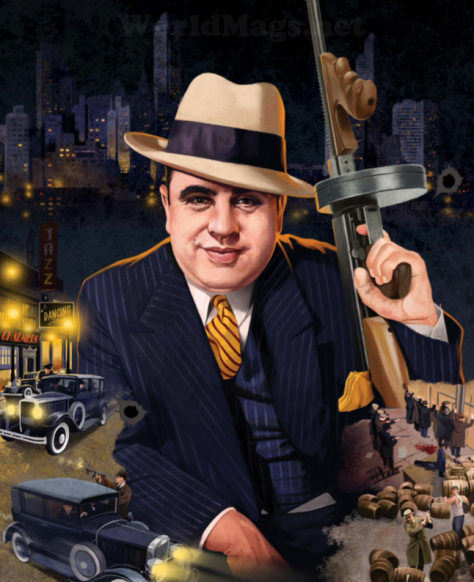 Upon his release Torrio kept a low profile – safe in the knowledge that with Capone in the hot seat, he’d be less of a target. For all of the Fox’s wiles, he just hadn’t reckoned on how personal this war had become.
Upon his release Torrio kept a low profile – safe in the knowledge that with Capone in the hot seat, he’d be less of a target. For all of the Fox’s wiles, he just hadn’t reckoned on how personal this war had become.
Returning from a day shopping with his wife on the morning of 24 January 1925, gunfire lit up the street from a blue Cadillac lurking on the curb, shredding shopping bags to confetti. Blood mingled with the groceries from a litany of wounds as Johnny Torrio stared at the sky, the shrieking of Anna Torrio strangely distant. As Bugs Moran stood over him, blocking the crisp winter sun, his revolver levelled at Torrio’s skull – the gun clicked on empty and the would-be assassins fled.
Capone’s ascendancy was immediate as Torrio underwent emergency surgery. Capone slept by his mentor’s bedside – the men of the Chicago Outfit standing guard around the clock, eying each disinterested nurse and flower-clutching day visitor suspiciously. “It’s all yours, Al,” said Torrio eventually. “Me? I’m quitting. It’s Europe for me.”
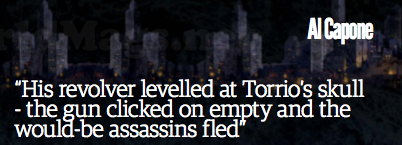 With the Fox quietly returning to Italy, Capone moved his headquarters into Chicago’s luxurious Lexington Hotel, taking over the fourth and fifth floors where he held court like an emperor, surrounded by mobsters and prostitutes. A concrete vault was installed in the basement and a secret staircase hidden behind a mirror in one of his bathrooms, just one part of a web of tunnels that would allow him a quick escape. Rising late most days, he took his time pouring over the morning papers like a statesman, before dressing himself in expensive finely tailored suits. Early afternoon, Capone moved
With the Fox quietly returning to Italy, Capone moved his headquarters into Chicago’s luxurious Lexington Hotel, taking over the fourth and fifth floors where he held court like an emperor, surrounded by mobsters and prostitutes. A concrete vault was installed in the basement and a secret staircase hidden behind a mirror in one of his bathrooms, just one part of a web of tunnels that would allow him a quick escape. Rising late most days, he took his time pouring over the morning papers like a statesman, before dressing himself in expensive finely tailored suits. Early afternoon, Capone moved
into his study in another suite where petitioners waited anxiously for favours and his patronage. Nobody talked about the “Free Kingdom of Torrio” anymore. No, now the press called Cicero the “Capital of Caponeland.”
Capone began to court newspaper men, handing out expensive cigars and inviting them to lavish parties, where the lord of the Chicago underworld played billiards with boxers, baseball players and the notoriously corrupt mayor of Chicago, Big Bill Thompson, miraculously re-elected in 1927. “Public service is my motto,” Capone explained to attentive reporters in December 1927. “99 per cent of the public in [Chicago] drink and gamble and my offense has been to furnish them with those amusements. My booze has been good and my games on the square.” Already the public had some sympathy for the bootleggers and Capone took hold of the notion and twisted it into the spectre of Robin Hood, portraying himself as heroic outlaw giving the people what they wanted.
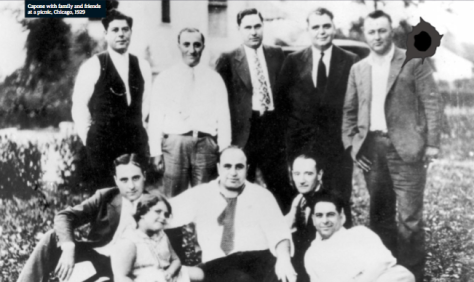 The bigger Capone’s business became, the more intricate and vulnerable the network of mobsters, bribes and alliances required to sustain it. It got to a point where the endemic corruption of Chicago’s law and government simply couldn’t be ignored. In the wake of the shocking St Valentine’s Day Massacre, Herbert Hoover was elected US president on an anti-corruption platform. His first move was to dispatch Prohibition agent Eliot Ness and a handpicked team of incorruptible ‘Untouchables’ to clean up Chicago’s streets by raiding Capone’s speakeasies and stills, and more importantly, it transpired, a team of IRS agents headed by accountant-turned-lawman Frank J Wilson with a mandate to turn over Capone’s finances for something that would stick in court.
The bigger Capone’s business became, the more intricate and vulnerable the network of mobsters, bribes and alliances required to sustain it. It got to a point where the endemic corruption of Chicago’s law and government simply couldn’t be ignored. In the wake of the shocking St Valentine’s Day Massacre, Herbert Hoover was elected US president on an anti-corruption platform. His first move was to dispatch Prohibition agent Eliot Ness and a handpicked team of incorruptible ‘Untouchables’ to clean up Chicago’s streets by raiding Capone’s speakeasies and stills, and more importantly, it transpired, a team of IRS agents headed by accountant-turned-lawman Frank J Wilson with a mandate to turn over Capone’s finances for something that would stick in court.
“Every time a boy falls off a tricycle, every time a black cat has gray kittens, every time someone stubs a toe, every time there’s a murder or a fire or the Marines land in Nicaragua, the police and the newspapers holler, ‘Get Capone!’“ raged Chicago’s premier gangster in his penthouse. “I’m sick of it.”
 As the gangster was having a tantrum, one of the men tasked with bringing him to justice was having second thoughts. “Doubts raced through my mind as I considered the feasibility of enforcing a law which the majority of honest citizens didn’t seem to want,” Ness admitted in his autobiography. “I felt a chill foreboding for my men as I envisioned the violent reaction we would produce in the criminal octopus hovering over Chicago, its tentacles of terror reaching out all over the nation. We had undertaken what might be a suicidal mission.”
As the gangster was having a tantrum, one of the men tasked with bringing him to justice was having second thoughts. “Doubts raced through my mind as I considered the feasibility of enforcing a law which the majority of honest citizens didn’t seem to want,” Ness admitted in his autobiography. “I felt a chill foreboding for my men as I envisioned the violent reaction we would produce in the criminal octopus hovering over Chicago, its tentacles of terror reaching out all over the nation. We had undertaken what might be a suicidal mission.”
While Capone wallowed in fine silks and syphilitic megalomania in his penthouse, Ness and his Untouchables began nipping at his heels – shutting down 18 stills and arresting 52 bootleggers in a single night. In the first six months alone, Ness’ daring raids had cost the Chicago Outfit an estimated $1,000,000, as well as some of loyal lieutenants, who now languished in jail for violations of the Volstead Act. He shrugged off Capone’s clumsy attempts at bribery, as well as two assassination attempts.
It was only ever an irritant, taking chunks out of his income and his pride – but to a mobster as egotistical as Capone, such defiance drove him into a rage. It was a fury Ness gleefully exploited – parading captured vehicles outside his hotel and taunting him on the phone. However much Ness might have damaged
Defining Moments – Space Shuttle Tragedy
The Challenger Space Shuttle and her seven-member crew were lost when a ruptured O-ring in the right solid rocket booster caused an explosion just 73 seconds after the Shuttle’s launch. The disaster led to a 36-month suspension of the Space Shuttle program and a subsequent investigation found that NASA had disregarded numerous warnings.
28 January 1986
















